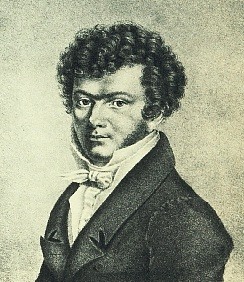|
Piano Sonata No. 10 (Beethoven)
The Piano Sonata No. 10 in G major, Op. 14, No. 2, composed in 1798–1799, is an early-period work by Ludwig van Beethoven, dedicated to Baroness Josefa von Braun. A typical performance lasts 15 minutes. While it is not as well known as some of the more original sonatas of Beethoven's youth, such as the '' Pathétique'' or ''Moonlight'' sonatas, Donald Francis Tovey described it as an 'exquisite little work.' Form The sonata is in three movements: First movement The first movement, marked ''legato'' in the urtext score, opens with a brief sixteenth-note phrase, accompanied by short, tied arpeggios in the bass. This phrase is used consistently throughout the movement and subject to a great deal of highly imaginative development through changing harmonies and shifting key-centres. Bars 70–80 are particularly notable, in that the main theme is subjected to highly chromatic treatment at this point. Thirty-second-note passages develop in the upper register of the piano, limi ... [...More Info...] [...Related Items...] OR: [Wikipedia] [Google] [Baidu] |
Beethoven 3
The Symphony No. 3 in E major, Op. 55, (also Italian ''Sinfonia Eroica'', ''Heroic Symphony''; german: Eroica, ) is a symphony in four movements by Ludwig van Beethoven. One of Beethoven's most celebrated works, the ''Eroica'' symphony is a large-scale composition that marked the beginning of the composer's innovative "middle period". Composed mainly in 1803–1804, the work broke boundaries in symphonic form, length, harmony, emotional and cultural content. It is widely considered a landmark in the transition between the Classical and the Romantic era. It is also often considered to be the first Romantic symphony. Instrumentation Symphony No. 3 is scored for two flutes, two oboes, two clarinets in B, two bassoons, three horns (the 1st in E, C, and F; the 2nd in E and C; and the 3rd in E), two trumpets in E and C, timpani in E and B (in the 1st, 3rd, and 4th movements) and in C and G (in the 2nd movement), and strings. Form The work is in four movements: Depending ... [...More Info...] [...Related Items...] OR: [Wikipedia] [Google] [Baidu] |
Thirty-second Note
In music, a thirty-second note (American) or demisemiquaver (British) is a Musical note, note played for of the duration of a whole note (or ''semibreve''). It lasts half as long as a sixteenth note (or ''semiquaver'') and twice as long as a sixty-fourth note, sixty-fourth (or ''hemidemisemiquaver''). Thirty-second notes are notated with an oval, filled-in note head and a straight note stem with three flags or beam (music), beams. A single thirty-second note is always stemmed with flags, while two or more are usually beamed in groups.Gerou, Tom (1996). ''Essential Dictionary of Music Notation'', p.211. Alfred. As with all notes with stems, thirty-second notes are drawn with stems to the right of the notehead, extending up, when they are below the middle line of the musical staff. When they are on or above the middle line, they are drawn with stems on the left of the note head, extending down. Flags are always on the right side of the stem, and curve to the right. On stems e ... [...More Info...] [...Related Items...] OR: [Wikipedia] [Google] [Baidu] |
1799 Compositions
Events January–June * January 9 – British Prime Minister William Pitt the Younger introduces an income tax of two shillings to the pound, to raise funds for Great Britain's war effort in the French Revolutionary Wars. * January 17 – Maltese patriot Dun Mikiel Xerri, along with a number of other patriots, is executed. * January 21 – The Parthenopean Republic is established in Naples by French General Jean Étienne Championnet; King Ferdinand I of the Two Sicilies flees. * February 9 – Quasi-War: In the single-ship action of USS ''Constellation'' vs ''L'Insurgente'' in the Caribbean, the American ship is the victor. * February 28 – French Revolutionary Wars: Action of 28 February 1799 – British Royal Navy frigate HMS ''Sybille'' defeats the French frigate ''Forte'', off the mouth of the Hooghly River in the Bay of Bengal, but both captains are killed. * March 1 – Federalist James Ross becomes President pro tempore of the United States Senate. * March ... [...More Info...] [...Related Items...] OR: [Wikipedia] [Google] [Baidu] |


